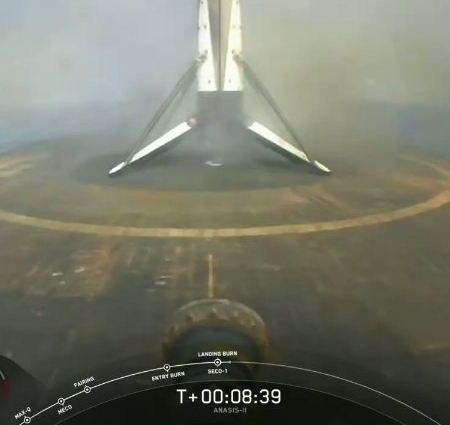Tianwen-1 launch set for July 23rd
China has rolled out its Long March 5 rocket and is now preparing to launch its Tianwen-1 orbiter/lander/rover to Mars this coming Thursday, July 23rd, some time between 12 am and 3 am (Eastern).
A Long March 5 rocket is set for liftoff with China’s Tianwen 1 mission some time between 12 a.m. and 3 a.m. EDT (0400-0700 GMT) Thursday, according to public notices warning ships to steer clear of downrange drop zones along the launcher’s flight path.
Chinese officials have not officially publicized the launch date. Chinese state media outlets have only reported the launch is scheduled for late July or early August, and officials have not confirmed whether the launch will be broadcast live on state television.
This will be the first operational launch of the Long March 5, which has had three previous test launches, with the first two failing. The success of the December launch, as well as the May success of the related Long March 5B, made this Mars mission possible.
After achieving orbit in February 2021 and spending two months scouting the landing site, the lander will descend to the surface, bringing the rover with it. The prime landing site is Utopia Planitia, in the northern lowland plains.
China has rolled out its Long March 5 rocket and is now preparing to launch its Tianwen-1 orbiter/lander/rover to Mars this coming Thursday, July 23rd, some time between 12 am and 3 am (Eastern).
A Long March 5 rocket is set for liftoff with China’s Tianwen 1 mission some time between 12 a.m. and 3 a.m. EDT (0400-0700 GMT) Thursday, according to public notices warning ships to steer clear of downrange drop zones along the launcher’s flight path.
Chinese officials have not officially publicized the launch date. Chinese state media outlets have only reported the launch is scheduled for late July or early August, and officials have not confirmed whether the launch will be broadcast live on state television.
This will be the first operational launch of the Long March 5, which has had three previous test launches, with the first two failing. The success of the December launch, as well as the May success of the related Long March 5B, made this Mars mission possible.
After achieving orbit in February 2021 and spending two months scouting the landing site, the lander will descend to the surface, bringing the rover with it. The prime landing site is Utopia Planitia, in the northern lowland plains.



